The “buyer journey” is a term that describes the process a potential customer goes through before making a purchase. This journey includes several phases ranging from the initial discovery of a problem or need (awareness) to the consideration of different solutions (consideration), up to the final purchase decision (decision). Understanding the buyer journey is essential for B2B companies that want to optimize their sales process and improve the customer experience.
HubSpot is a powerful tool that helps companies manage and optimize the buyer journey. With this, companies can track the behavior of potential customers, segment audiences based on buyer personas and customize marketing and sales strategies for each stage of the journey. In this article, we'll explore how HubSpot can support every stage of the buyer journey and improve the effectiveness of your marketing and sales strategies.
What is the Buyer Journey?
The buyer journey consists of three main phases:
- awareness
- consideration
- decision
Inbound marketing supports this journey by providing specific content for each stage:
- in the awareness phase, educate potential customers about their problems;
- in the consideration phase, it offers detailed information to evaluate options;
- and in the decision phase, facilitates the purchase with demos, testimonials and special offers.
In summary, buyer journeys and inbound marketing work together to naturally and delightfully guide prospects toward purchase, providing value and building buyer trust along the way.

What is a Buyer Persona
In the context of the buyer's journey we must also talk about the buyer persona. A buyer persona is a semi-fictional representation of your ideal customer based on your customers' real demographics, behaviors, motivations, and goals. Buyer personas help companies better understand their target audience and create their marketing, sales and product development strategies based on the needs and wants of their customers.
A typical buyer persona includes information such as:
- Demographic data: age, gender, education level, occupation, income.
- Psychography: interests, values, behaviors.
- Challenges and problems: what problems does it try to solve.
- Goals and desires: what you hope to achieve.
- Preferred communication channels: how you prefer to receive information.
The person identified is, therefore, the one who ideally carries out a purchasing process and on whom, therefore, a whole series of choices must be based to ensure that this purchasing journey is tailor-made and successful.
1. Awareness
In the awareness phase of the customer journey, the potential customer recognizes that he has a problem or need. At this stage, the main objective is to attract the attention of potential customers and inform about a certain product or service or possible solutions. Typical content for this stage includes blog posts, e-books, and guides that address common problems and offer initial solutions.
2. Consideration
During the consideration phase, the potential customer has identified the problem and is evaluating different options to solve it. Here, the focus is on providing detailed information on available solutions. Case studies, webinars, and white papers are examples of content that can be used to help customers consider their options.
3. Decision
In the decision phase, the potential customer is ready to make a purchasing decision. At this stage, the content should be geared towards making the decision easier, such as product demos, customer testimonials and special offers. It is not uncommon for the potential customer to hesitate, leave the product in the cart or abandon the purchase at this stage of the buyer's journey. In this case, it is important to follow a series of actions to ensure that the user is encouraged to proceed with the purchase.
How HubSpot Supports the Buyer Journey
HubSpot CRM is a comprehensive platform that integrates marketing, sales and customer service tools to support the entire buyer journey. Let's see how HubSpot, within a well-structured inbound marketing strategy, can help in each of the three phases of the journey.

1. Awareness
During the awareness phase, it is crucial to attract leads and start building a relationship. HubSpot offers several tools for this stage, including the Content Management System (CMS), blog, and a search engine optimization (SEO) recommendation system. With the CMS, you can create and optimize content that answers common questions from your potential customers, spreading it across different channels. Using blogs and SEO helps position your content so that it is easily findable by potential customers who are looking for solutions to their problems.
HubSpot also offers social media management tools, allowing you to promote your content and increase your online visibility. Creating high-quality content and promoting it through social channels helps you capture the attention of potential customers during the awareness phase.
2. Consideration
In the consideration phase, it is important to provide detailed and useful information to help potential customers evaluate their options. HubSpot facilitates this process through tools such as email marketing, marketing automation and the creation of ad hoc landing pages.With HubSpot marketing automation, you can send personalized content to your leads based on their behavior and preferences. For example, if a lead downloads an e-book about your solution, you can follow up with a series of emails that provide additional relevant information, such as case studies and webinars.
Landing pages are another powerful tool offered by HubSpot. These pages can be created to respond to specific audiences and guide them further into the sales funnel. By using forms and calls-to-action (CTAs) on these pages, you can gather valuable information about your leads and continue nurturing them with relevant content.
3. Decision
In the decision phase, potential customers are ready to make a purchasing decision. HubSpot offers tools to facilitate this process and increase conversions. Tools like on-demand demos, customer testimonials, and special offers can be easily managed and promoted through the HubSpot platform.
HubSpot's Customer Relationship Management (CRM) features play a crucial role in this phase. With CRM, you can track all your leads' interactions and have a complete view of their journey. This allows you to make communication even more personal and offer tailored experiences that facilitate the purchasing decision.
Plus, it offers tools for bid and contract management, making it easy for your sales team to send professional proposals and manage the closing process. The sales pipeline feature within the Sales Hub helps you view and manage opportunities, ensuring no leads are overlooked.
Personalize the Buyer Journey with HubSpot
One of the biggest advantages of HubSpot is its ability to personalize the buyer journey based on buyer personas and lead behaviors. Creating detailed buyer personas helps you better understand your audience and segment your leads more effectively.
With HubSpot, you can use the data you collect about lead behavior to create specific audiences and personalize your communication. For example, if a lead has visited your pricing page multiple times, they may be ready for a direct sales conversation. You can set up automatic triggers that alert your sales team when a lead reaches a certain engagement score, ensuring you contact them at the right time.
Want to know more about what you can do with this tool? Ekeria is a gold partner of HubSpot. Request a free demo with which we will show you all the main functions and plans available, so you can understand what is best suited to your needs.
The Sales Funnel and the Three Phases (TOFU, MOFU, BOFU)
HubSpot helps you manage your sales funnel effectively through the three main stages: TOFU (Top of the Funnel), MOFU (Middle of the Funnel), and BOFU (Bottom of the Funnel).
-
TOFU (Top of the Funnel): In this phase, the goal is to attract leads and create awareness. The software allows you to create and promote valuable content that answers potential customers' initial questions and attracts them to your website.
-
MOFU (Middle of the Funnel): During the consideration phase, CRM helps you nurture leads with more detailed and relevant content. Marketing automation and personalized emails play a key role at this stage, providing information that helps leads evaluate their options.
-
BOFU (Bottom of the Funnel): In the decision phase, HubSpot facilitates the conversion of leads into customers. Tools like CRM, deal management, and custom demos help you close sales and build lasting customer relationships.
Conclusion
The buyer journey is a crucial element of the sales process for B2B companies. Understanding and optimizing this journey can lead to increased conversions and a better customer experience. HubSpot offers a complete suite of tools to manage every stage of the buyer journey, from awareness to decision and consideration.
With this software, you can create targeted content, personalize communication with leads, and optimize your sales funnel. By making the most of HubSpot's features, you can improve the effectiveness of your marketing and sales strategies, ensuring that your potential customers have a positive and engaging experience throughout their buyer journey.
If you want to learn more about HubSpot, contact Ekeria for a free demo.

FAQ
What is the buyer journey?
The buyer journey is the path that a potential customer takes, from the discovery of a need or problem to the purchase of a solution. It is divided into key stages such as awareness, consideration and decision, during which the customer goes through different experiences and interactions with the brand.
What is the importance of the buyer journey for companies?
Understanding the buyer journey allows companies to adapt their marketing and sales strategies to meet customer needs at every stage of the journey. This improved customer experience can increase conversions, reduce sales times and strengthen customer loyalty.
How can I identify the different phases of the buyer journey?
The phases of the buyer journey are generally identified as awareness, consideration and decision. During the awareness phase, the customer recognizes a problem or need. In the consideration phase, she explores possible solutions. In the decision phase, he makes the decision to purchase a specific solution.
What is the role of buyer personas in the buyer journey?
Buyer personas are semi-fictional representations of a company's ideal customers, based on demographic, behavioral and psychographic data. They help companies better understand their customers and personalize their marketing strategies, adapting them to the specific needs of different buyer personas at each stage of the buyer journey.
How can I optimize my buyer journey?
To optimize the buyer journey, it is essential:
- Knowing Buyer Personas: Understanding who your ideal customers are and what motivates them.
- Create Relevant Content: Provide useful, relevant information every step of the way.
- Facilitate Interaction: Simplify the shopping experience and provide support through various channels.
- Measure and Optimize: Monitor the performance of the buyer journey and make continuous improvements based on the feedback and data collected.
What are the tools that can help manage the buyer journey?
Tools like HubSpot, Salesforce, and other Customer Relationship Management (CRM) platforms offer features to manage and optimize the buyer journey. These tools help you track customer interaction with your brand, automate communications, and personalize the shopping experience based on customer needs.
.webp)


